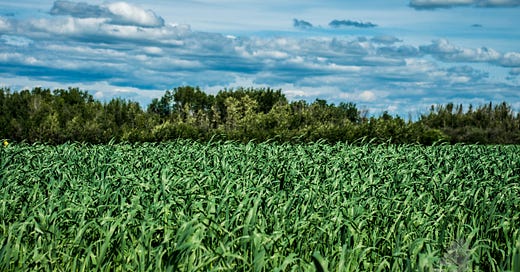Agricultural meteorologist optimistic for better growing season
Historical cycle data indicative of future weather
This year will see the end of the drought that has plagued farmers and ranchers in the BC Peace Region for the last five years, according to agricultural meteorologist, Drew Lerner.
Lerner founded World Weather Inc., in 2001, but he got his start in meteorology in 1978 when he participated in the International Monsoon Experiment, which was an international effort to improve forecasts for the Indian Monsoon by collecting and processing data throughout the tropics. In 1979, he took a forecasting position with the Midwest Weather Services, where he helped develop an agricultural weather product called Commodity News Service. Commodity News Service was later absorbed into Global Weather Services, and Lerner became part of a well-known and respected group of commodity weather forecasters, which he also led from the late 1990s until 2001.
Earlier this spring, Lerner spoke to a group of local farmers and ranchers from the Peace River Forage Association and brought encouraging predictions for the 2025 growing season.
“Everyone in this room will have a better year this year,” Lerner told the group.
The drought, he said has been ongoing since 2020 with what he described as substantial moisture deficits, and in 2024 the moisture was well below normal for the entire growing season.
“I don’t see anything to indicate month after month of either wet or dry.” ~ Drew Lerner, Agricultural Meteorologist World Weather Inc.
“A way to predict the weather is to go back in history, look at other times when we were at the same point and look at what happened.”
When he looked back at the historical weather patterns, Lerner found that 2024 was very much like 1967. Also, February 1968 was very dry, much like 2025. May and June, he predicted would be warm, not hot, and see near normal rain for those months.
The best long-range tool for weather forecasting is the 22-year solar cycle Lerner says, and he is optimistic that there will be more moisture this growing season, and wetter into harvest.
Meteorologists have been studying the solar cycle since the 1700s, so there is a lot of data available, Lerner explained.
The 22-year solar cycle is made up of two, 11-year cycles in which the number of sunspots around the sun go from a minimum to a maximum number over an eleven-year period. The second 11-year solar cycle is always more intense than the first.
Think back to the 1930s, 1950s, 1970s and 1999-2002 which were bad drought years, occurring over multiple years and impacting a big part of the continent.
“We’re always in trouble in North America when we move from the minimum to the maximum,” Lerner said. “It is a favoured period for drought to occur in North America, and that drought is always more severe in the 22-year solar cycle.”
While there are other droughts that occur during the cycle, they’re never as intense as when solar sunspots are at their maximum.
The solar maximum officially occurred in August 2024, and last year’s growing season was “wetter biased because the atmosphere was beginning to try to break out of the pattern.”
For example, in May 2024, Fort St. John recorded 5.6mm of rain for the month, while this May we received 16.8mm.
“I don’t see anything to indicate month after month of either wet or dry.”
There will continue to be constant changes in weather, but it will be wetter than last year and set farmers and ranchers up for a better harvest, Lerner said.
The precipitation Lerner forecast has already proved beneficial, helping the BC Wildfire Service fight the wildfires that were blazing throughout northeastern BC in late May, and early June.
Although June’s rainfall total was less than June 2024, because last month’s precipitation came more frequently, rather than in two or three heavy downpours as it did in 2024, the soil is less hydrophobic, and better able absorb the moisture, creating better overall soil moisture.
Environment Canada’s Drought Monitor to the end of May 2025 shows the North Peace as still in a state of severe drought.
It will take time to repair the moisture deficits, but Lerner is confident that wetter weather is on the way.
“The next time we’re in a mess like this will be 19 years from now.”



